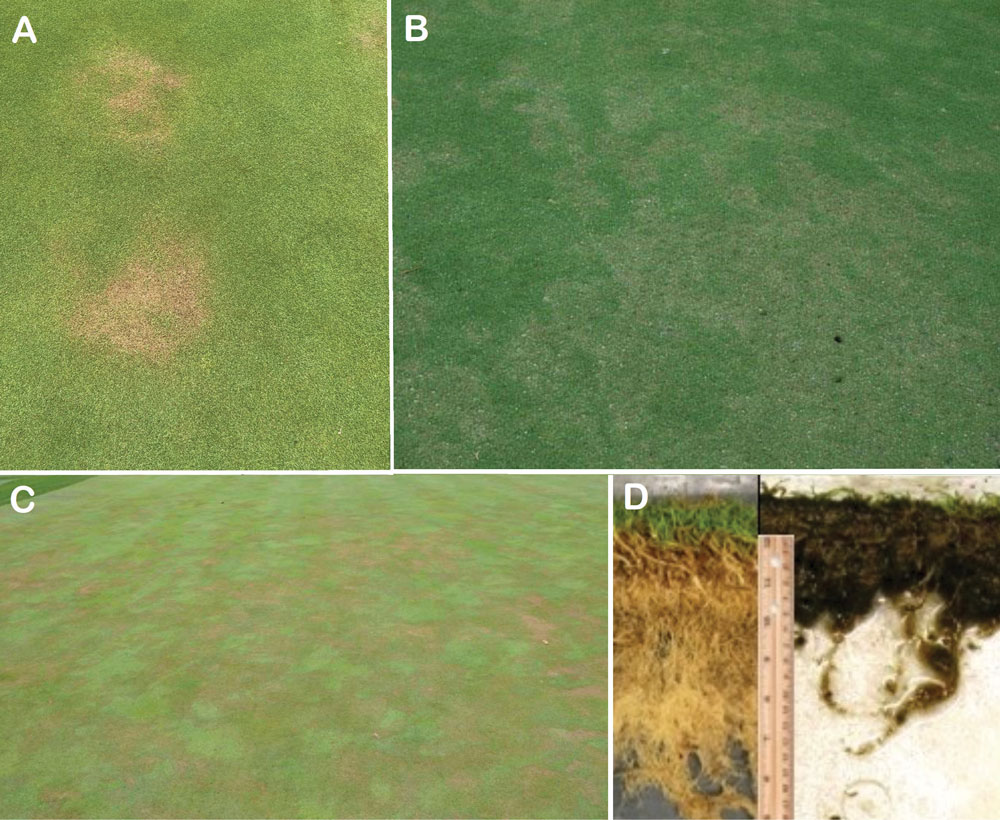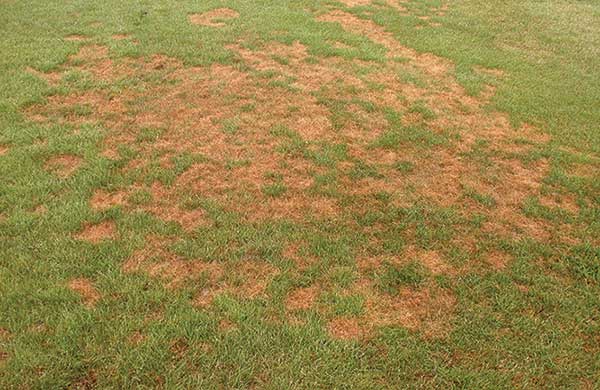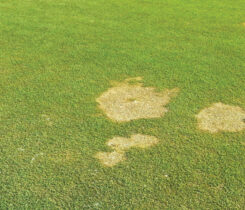Why it’s critical to stay vigilant during Pythium season
The summer is a sleepless time knowing Pythium can strike quickly. Pythium disease is a common problem that affects most of our turfgrass species on golf courses worldwide.
Various species of Pythium fungus cause it and can lead to significant damage if not appropriately managed. Pythium disease thrives in warm and wet conditions, making it particularly troublesome during high humidity or excessive rainfall.

(A) Pythium root rot on creeping bentgrass
(B and C) Pythium root rot on creeping bentgrass, and (D) healthy versus Pythium root rot. (Photos by: MiGCSA (A); Jim Kerns, Ph.D., NC State University (b, c, d))
One of the main symptoms of Pythium disease on golf courses is irregularly shaped discolored turf patches. These patches often start as small areas of wilted or yellowed grass, which quickly expand and merge, forming larger damaged areas. The affected turf may also have a slimy or water-soaked appearance, indicating the presence of a fungal pathogen.
Pythium disease can spread rapidly and wreak havoc on golf courses, especially if left untreated. The fungus attacks the plant’s roots, causing root rot and impairing the ability of the grass to take up water and nutrients. As a result, the affected areas become weak, thin and prone to further damage from foot traffic and mowing equipment.
First, to effectively manage Pythium disease, focus on cultural practices such as improving drainage, reducing shade and promoting healthy turf growth. This is done through proper fertilization and irrigation practices. These practices help create an environment less conducive to Pythium fungus growth.
Fungicides are often needed to control Pythium disease, and several are available that specifically target Pythium species. Apply these fungicides preventively, especially during periods of high disease pressure, or as curative treatments if the disease is already present.
Daily monitoring and early detection are crucial for effective Pythium disease management, so train staff to identify early symptoms and report any signs of disease.
Pythium disease poses a significant challenge for golf course management due to its rapid spread and potential for extensive damage. Golf course superintendents must control the conditions that may cause it with cultural practices, targeted fungicide applications and vigilant monitoring.












